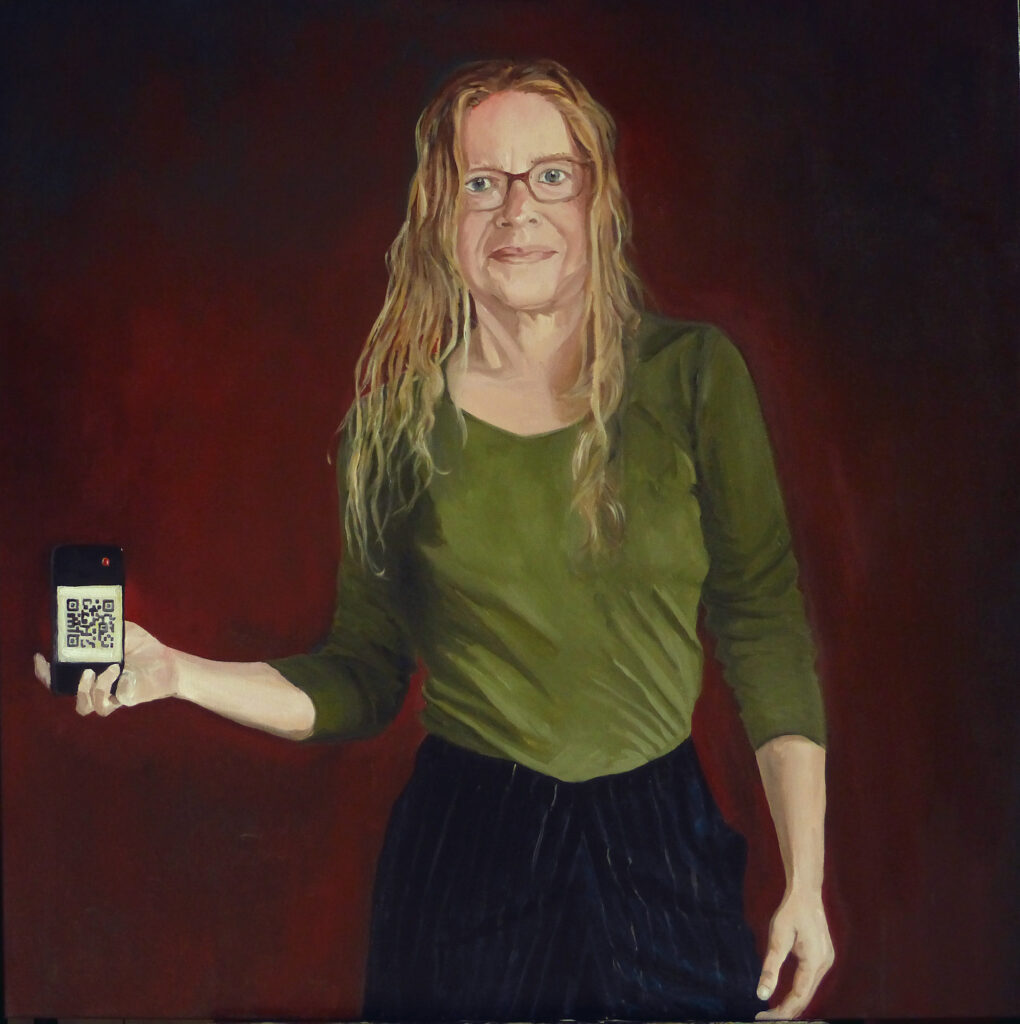
Claude’s portrait with QR code
huile sur toile, 100×100 cm, Coll Particulière
Humanism probably originated with the representation of facial features. The Renaissance made the portrait the celebration of the individual and of this new freedom of the mind and body. The portrait then brought together around the most vivid possible face the characteristic signs of the character’s identity: the quality of the clothing, accessories, objects, or tools, and even some animals like the splendid ermine of Leonardo’s Lady. Today, as our clothes are ‘casual,’ and external signs of originality are neutralized by fashion effects, our identity is gradually reduced to a coded formula, whether biological or social, with a huge step forward in terms of social codification thanks to epidemic scares. Needless to say, individual coding, whatever the good intentions, is an anti-humanist act.
The QR code, which stands for ‘quick response code,’ was developed by a Japanese engineer to track the history and movement of goods. With digital fanaticism and the pandemic, it is now applied to human beings who are now ‘tracked’ like goods. The smartphone being the obligatory portable spy. Today, portrait painting, besides the pleasure it provides at each stage of its execution through the search for the right touch, has something of a reaffirmation of the human.